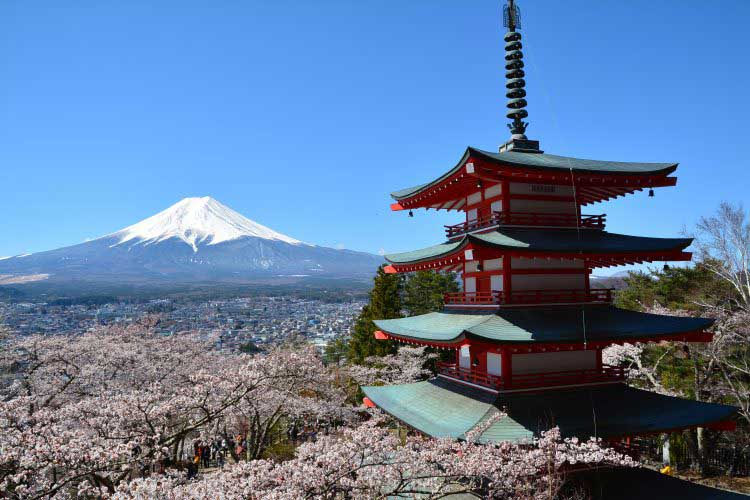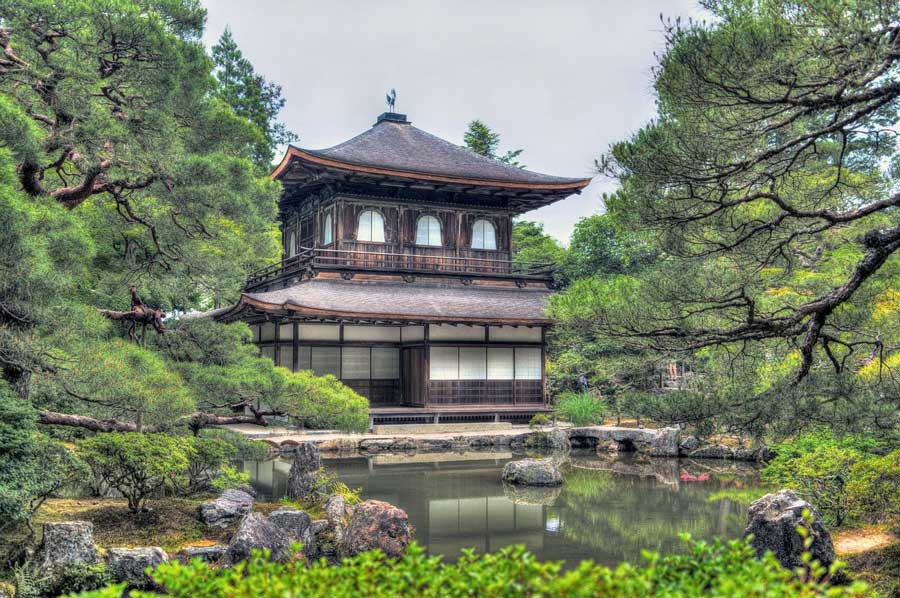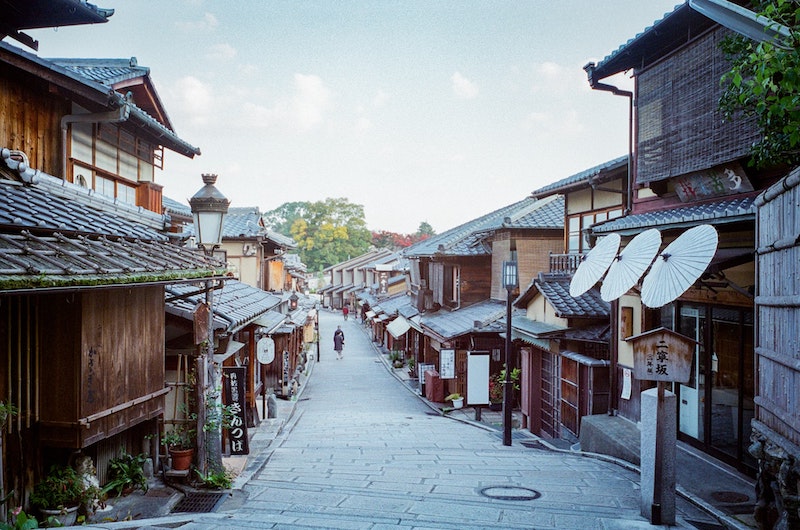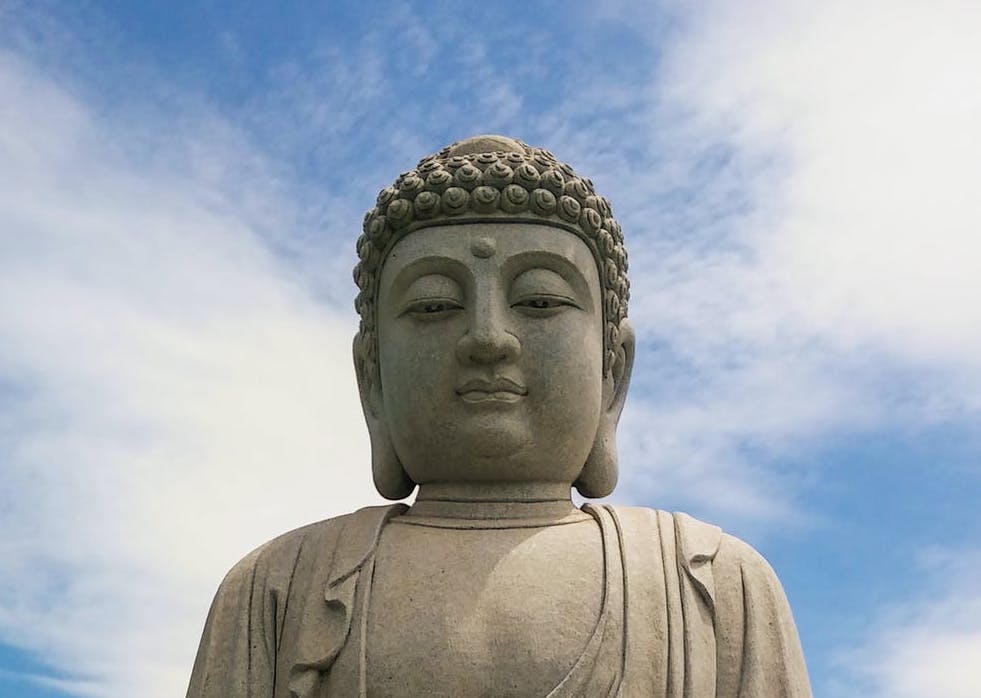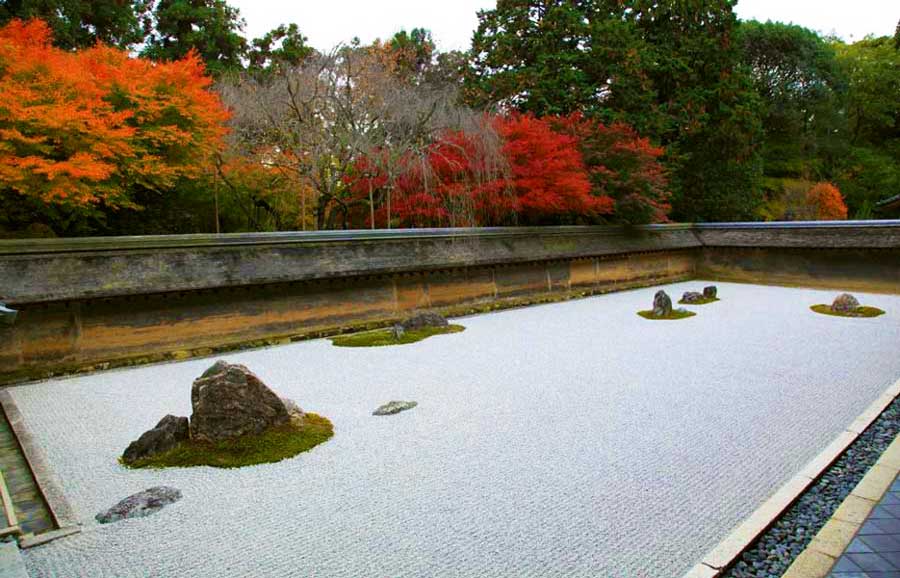
美しく謎に満ちた「枯山水」で世界的に有名な龍安寺は、金閣寺や仁和寺などと同じく京都の北西部に位置し、京都の中でも最も参拝者の多い寺院のひとつです。
今回は、この龍安寺を英語で説明する簡単な表現をご紹介していきます。
ご興味のある方は、当サイトで 英語クイズ(5000問) を出題しておりますので是非ご覧ください。
目次
龍安寺へのアクセス
Ryoan-ji temple is located in the northwest of Kyoto and is the most famous of all rock gardens in Japan.
(龍安寺は京都の北西に位置し、日本の枯山水庭園の中で最も有名です。)
You can access Ryoan-ji in several ways.
(龍安寺へは、行き方がいくつかあります。)
Ryoan-ji can be reached from JR Kyoto Station by taking the City Bus #50 which runs every 15 to 30 minutes. Get off at the “Ritsumeikan Daigaku-mae” bus stop and walk for 7 minutes. The bus ride takes about 60 minutes.
(JR京都駅からは、15〜30分間隔で運行されている市バス50系統に乗って「立命館大学前」で降りて7分ほど歩きます。乗車時間は60分くらいです。)
Alternatively, take City Bus #59 from Keihan Sanjo Station to the “Ryoanji-mae” bus stop.
(または、京阪三条駅から市バス59系統に乗って「龍安寺前」で降ります。)
Ryoan-ji can also be accessed by the Keifuku Kitano Line, which runs through the areas of northwestern Kyoto and offers a connection to the Arashiyama Line. Get off at Ryoan-ji Station, from where it is an 8-minute walk to the temple.
(龍安寺へは、京都北西部を走り嵐山線へ接続する京福北野線でも行くことができます。龍安寺駅で下車し、そこから徒歩8分です。)
Ryoan-ji is very close to two other temples, Kinkaku-ji and Ninna-ji. It can be reached on foot or by a short bus ride.
(龍安寺は金閣寺や仁和寺から近いので、徒歩またはバスで短時間で行くことが出来ます。)
龍安寺の説明
枯山水庭園は
- (traditional Japanese) rock garden
- Zen garden
- dry garden
などと訳されるのが一般的です。
Ryoanji temple, a Zen Buddhist temple of the Myoshinji school of the Rinzai sect, is located at the foot of the mountain Kinugasa.
(臨済宗妙心寺派の禅仏教寺院である龍安寺は、衣笠山の麓にあります。)
The temple was originally the villa of an aristocrat, but in 1450, Daimyo (lord) Hosokawa Katsumoto converted it into a Zen temple.
(もともとは貴族の別荘でしたが、1450年に大名細川勝元が禅寺に改築しました。)
It was burned down during the Onin War (1467–77) but rebuilt in 1488 by Katsumoto’s sons.
(応仁の乱で焼失しましたが、勝元の息子たちによって1488年に再建されました。)
Zen temples such as Ryoan-ji have a dry/rock garden. It is created by using only white sand and stones without any water to represent the spiritual world of Zen like a landscape painting.
(龍安寺などの禅寺には、枯山水庭園があります。水を使わずに、白い砂と石だけで風景画のような禅の精神世界を表現しています。)
The Ryoan-ji stone garden is one of Kyoto’s most renowned attractions. So famous worldwide that the name has become synonymous with Japanese rock gardens.
(龍安寺の枯山水は京都の名所のひとつです。とても有名なので、日本の石庭の代名詞となっています。)
Ryoan-ji temple was designated a UNESCO World Heritage Site in 1994 and is especially famous for its mysterious rock garden, “kare-sansui.”
(龍安寺は1994年に世界遺産に登録され、特にミステリアスな「枯山水」で有名です。)
The temple features a simple yet remarkable garden that covers a rectangular shape with the size of a tennis court.
(長方形のテニスコートほどの大きさに広がる、シンプルながら珍しい庭園が特徴です。)
The world-famous rock garden consists of white raked sand with fifteen rocks and uses the laws of perspective to make the garden appear deeper.
(世界的に有名なその庭園は、白い砂と15個の岩で構成されており、奥行きを感じさせるように遠近法が用いられています。)
It is best to see the temple in the early morning before many worshipers visit.
(大勢の参拝者が訪れる前に、朝の早い時間に寺院を訪れるのが良いです。)
The beauty and calm of the stone garden will help you purge the stress from your daily life.
(美しく穏やかな石庭は、日常生活のストレスを取り除く一助となるでしょう。)
枯山水/石庭の解釈
Many people see the garden as expressing a natural landscape, such as an ocean and islands with lines made by the raked white sand and the fifteen rocks scattered on it.
(白い砂を掻いた線とその上に配置された15個の石によって、海や島などの自然の景色を表現しているという解釈が一般的です。)
Other theories abound, including islands in the sea, a tigress and her cubs crossing a river, and strokes of the Chinese character meaning “heart” or “mind.”
(海に浮かぶ島、川を渡るメスの虎と幼い子供、岩の配置を漢字の「心」と読むなど、他にも説がたくさんあります。)
Even if you look at the garden from anywhere on the engawa (Japanese wooden veranda), you can never see all fifteen rocks.
(縁側のどこから見ても、15個すべての石を見ることは出来ません。)
It is said that fifteen rocks are cleverly arranged on a sea of white sand so that only one of them is kept hidden from any point.
(どこから見ても1つだけが隠れるように、15個の石が白い砂の海の上に巧みに配置されているといわれています。)
A miniature of the rock garden is demonstrated inside the temple, and you’ll be able to spot all fifteen stones.
(庭園のミニチュアが寺院内に展示されており、15個の石すべてを見つけることができます。)
Nobody knows who made it, when, or what the true meaning is. So what does this rock garden imply? You can only find out by seeing it for yourself.
(誰がいつ作ったのか、本当の意味は何なのか誰にも分かりません。ではこの庭園は何を暗示しているのでしょうか。それはあなたの目によってのみ知ることが出来るでしょう。)
蹲 / つくばい
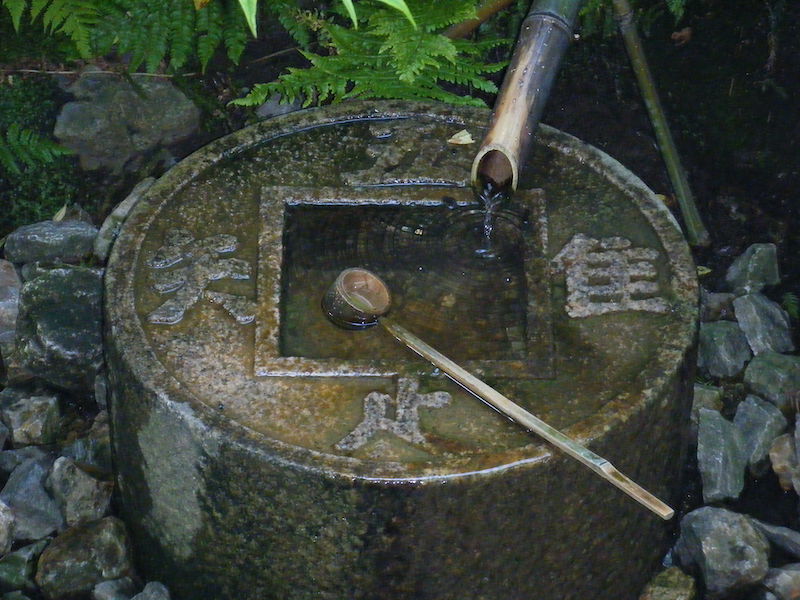
Another must-see thing is the tsukubai (stone water basin) near the tearoom. It looks like an antique coin with four characters, which means nothing alone.
(もう一つ必見なのは、茶室のそばにある蹲です。4つの漢字が書かれた古いコインのように見えますが、それ単体では意味を成しません。)
However, combining each of the characters to the central square hole which is the shape of a Japanese character meaning “mouth,” shows a Chinese proverb “吾唯足知.”
(しかし、中央の四角い穴を日本語の「口」に見立ててそれぞれの漢字を組み合わせると、中国のことわざ「吾唯足知」が表れます。)
It means “we have everything we need” and is an important Zen teaching.
(これは「必要なものはすべて揃っている」という意味で、大切な禅の教えです。)
